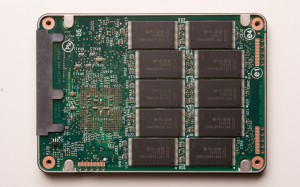
Most people don’t know the workings of what goes into their being able to surf the Internet and visit web pages. That’s perfectly fine unless you’re a developer or something similar. When you click on URL what you’re doing is making a request, and that request is handled by a server. Back in the 1990s when the Internet was in its infancy there were requests being made, but nowhere near the massive numbers of them being made nowadays. This is why servers have been having a lot more asked of them all the time, and sometimes they just don’t have the capacity that’s needed for them.
Need and demand have always been the spurs for innovation, and this is no exception. The aim has been to design servers that have the ability to handle the ever-greater demands on them, and these days the top dog in that regard is a bare metal server. That may sound like a strange name, but they’re called bare metal servers because by being just ‘exposed metal’ they highlight the fully physical aspect of centralized and individual hosting of websites.
That’s because the appeal of bare metal servers is all about ‘single tenancy’ and having the best in performance, reliability and security. It means that your website will be as readily available as possible for visitors at all times, and of course if that site is a key part of your e-commerce business operations then having that performance, reliability, and security is going to be of primary importance for you. Here at 4GoodHosting it should come as no surprise that as Canadian web hosting provider this is the kind of stuff we are very in the know about, so let’s get further into why bare metal tends to be best when it comes to servers.
-
Better Relative Costs
The performance of on-premises servers and bare metal servers is fairly similar. The biggest cost savings come with datacenter space for hardware as well as data center power costs. These cost savings can be significant, and both offer varying degrees of quality of service. You will pay more upfront for a bare metal server, and that’s because they’re pretty much exclusive to the client in terms of dedicated resources.
What you get for that is unparalleled performance, hardware configurations, and nearly unlimited scalability. The next advantage is that bare metal server providers often offer per-hour billing plans rather than full service contracts paid in advance for the entirety of the term. Bare metal servers may seem pricier, but this is offset by the advantage of paying only for what you use.
-
More Features for Business
Bare metal servers can be utilized and provide advantages for any business. That’s primarily because of the ability configure them exactly how you want them to be before deploying bare metal servers. That can be done in a range of hardware configurations plus plenty of virtualization environments, but bare metal servers let businesses custom build their own servers with impressive flexibility and customization options. A business that is building bare metal servers can create new operating systems, virtual operating systems, or convert an existing operating system to a virtual environment.
Eliminating hardware redundancy is the next part of the appeal. One example being how a bare metal server can be used to ensure that the server’s power is never turned off, which could mean less in the way of server downtime.
-
More Agreeable Cost Factors
The biggest determining factor for most when considering a bare metal server will be around the cost for top-end hardware and features. You’ll be evaluating which equipment they need, what features they require, and how much redundancy might still be needed with the hardware. The more you pay for your server the more you’ll have with available cores, powerful hardware configurations, and more available RAM.
One thing to factor into cost savings is the reliability of bare metal servers when it comes to downtime. This reliability comes from the fact that by not sharing the server with other renters, you’re not going to experience the kind of downtime that can cost a company when virtualized servers are the choice.
-
Software Configurations are Usually Less Pricey
Software configuration is another important part of the equation. A bare metal server configurated with dedicated hardware components and high-end graphics is going to be quite the powerhouse unit. If that can be acquired not-so expensively that’s going to be a huge plus. Businesses will be considering how much they want to dedicate their resources to the maintenance and support of this server. Some companies are really interested in expanding their virtualization and virtual computing space, and a good virtualization platform can make that simpler process.
-
Bare Metal Server Management and Overhead Costs
The management and general overhead costs for bare metal servers is much the same compared to virtualized servers. This usually isn’t a dissuading factor for decision makers, depending on what the organization wants from its servers.
We can consider how a bare metal server can have faster response times to the network than a virtualized server, something that definitely will be advantageous. The networking team can set up new server builds quickly and can configure the server with the features that they need in the shortest amount of time because a bare metal server can be set up quickly and without making any changes to the virtualization platform.














